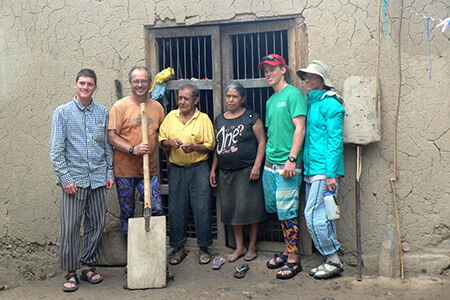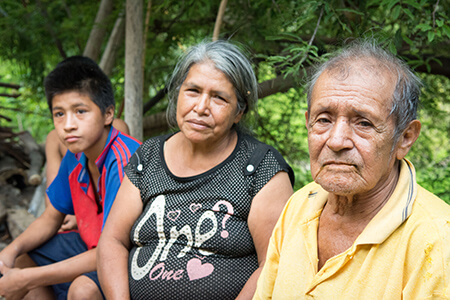
Joe and the boys and I have a tradition that started on our first overseas trip as a family. That trip was to Tanzania when Ben was 11 and Ethan was 8. We spent New Year’s at the coast, just a few days after the 2004 tsunami that devastated southern Asia. The wave arrived on Tanzania as an extra high tide—a relative nonevent—just a day or two before we got there. But Ethan found a wooden paddle on the beach that had washed up with the Tsunami debris, and we brought it home with us. So began our paddle collection. We have obtained a paddle on every overseas trip since. We usually purchase the paddle from a local family. It is a win-win situation because the family gets a lot more for their paddle than they paid for it, and we get a unique paddle for our collection. We have a paddle from The Mekong River in Vietnam, Lake Titicaca in Peru, the Ecuadorian jungle, and Lake Chama in Ethiopia, in addition to our Tanzanian paddle. We usually enlist the help of our local guide in the search for the paddle. At first the reaction is one of “are you serious?!”, but then the guide really gets into the spirit and searches for the right person to buy a paddle from and convinces them to sell their paddle. There is always a good story involved.

The search for a paddle on the Rio Marañon followed a similar trajectory as usual. Pedro wasn’t sure what to think at first, but once he realized we were serious, he began to see the opportunity selling a paddle would be for a poor local family. The day after Christmas, at the farm next to our campsite, was our chance.

Most of our group walked up to the farm house after breakfast to meet the family. The farmer and his wife were hosting grandchildren from the city ranging in age from about three to perhaps nine or ten. They welcomed the lot of us into their small dirt-floored home, where we sat around the perimeter of the living room area while Pedro showed them videos of rafting and kayaking on the Rio Marañon, plus a video about the consequences of the dam proposals to their future. We appreciated seeing what information SierraRios was using to help the locals along the river understand what would happen to them if the dams became a reality. It was also fun to watch the children sneaking peeks at us; we were the most excitement they had seen in a while. We asked some polite questions through our various Spanish speakers, and listened to translations of how these settlers in the wilderness felt about the dams. They seemed a bit bewildered by the information they were receiving, or perhaps by the presence of so many foreign house guests. I remember the grandmother said that the idea of losing their home because of a dam was frightening. I wasn’t sure if the family really believed such a thing could happen, though.
Pedro had explained to the grandfather about our quest for a paddle, and after the videos, several paddles were assembled outside the front door for us to choose from. They were the right size for us to take home on the plane (not always the case) and were clearly handmade. The man had found them washed up on his beach after flood rather than making them himself, but they were authentic: a hand-hewn shaft about four feet long with a heavy rectangular blade attached with metal brackets. It was a heavy paddle and we were impressed that the Peruvians actually used such a heavy paddle to cross the river. The man wanted to give us the paddle as a gift, but we insisted we should pay for it. We paid him 50 soles, which is roughly $15. At first he wouldn’t take it, saying it was too much, but finally he took it saying he would do it for us, not for himself. His wife then tried to give us another paddle since we had paid so much, and at our polite refusal, brought us a large bunch of bananas for our trip, which we gratefully accepted.

Then the farmer showed us his water-powered mill, under the house, which he had built himself and was very proud of. It was fascinating—simple and effective—with a wooden wheel under the house that the ditch water turned to spin a shaft that came up through the floor of the grinding room to push the attached huge hand hewn stone grinding wheel around a circular trough. After that, the two oldest sons led us on a short hike through their farm. When we departed the beach just before noon, the six kids came down to the beach to see us off. We had made new friends. These lovely people were quiet and unassuming, yet generous and accepting. We had been told that in some places along the river, we might not be welcome because the locals associated rafters with the exploration crews from the dam building companies. Especially farther down river in the jungle section, rafting groups had been threatened with death if they passed through. But here at this farm, and at the other villages we visited, we were welcomed because the people knew we were sympathetic to the cause of saving their river and their homes.
To raft and/or help protect the Rio Marañon, contact SierraRios at www.sierrarios.org
Read more entries in our ten-part series about the Rio Marañon.














